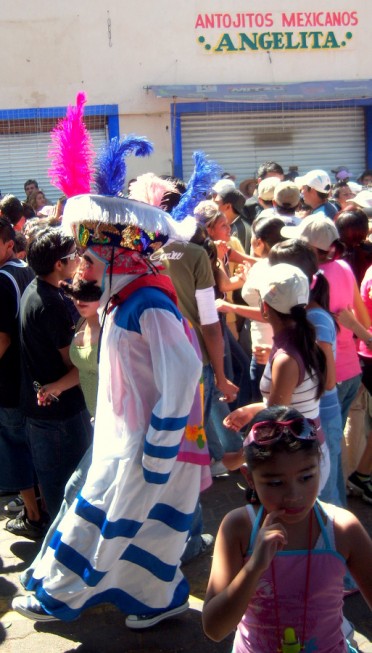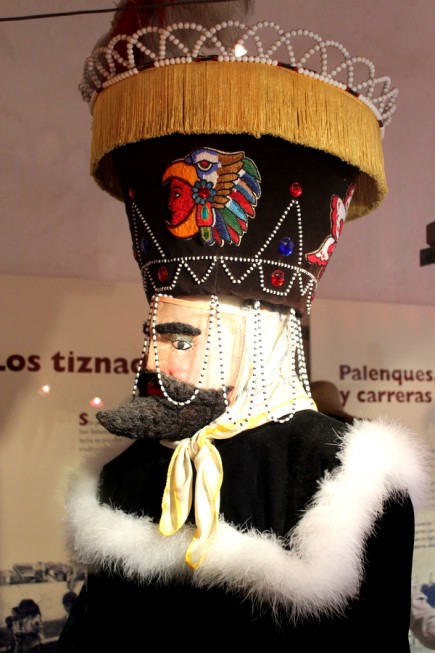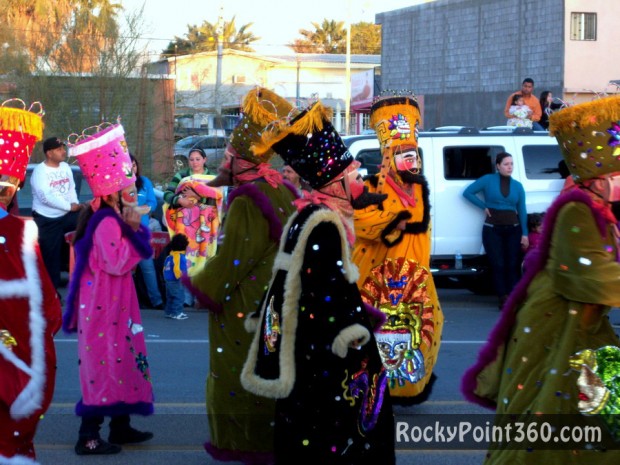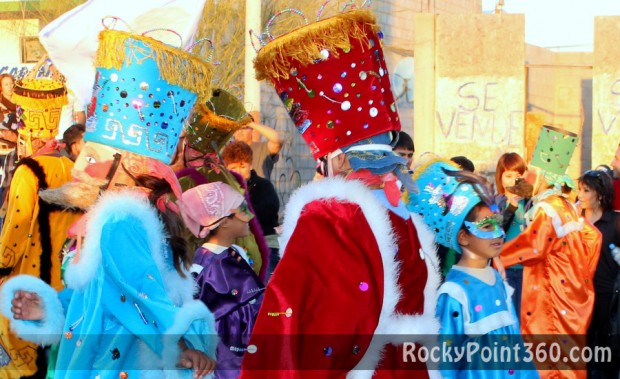There has been a lot of talk recently during these “carnavalesque” days. Most of us get excited about the dancing, music, parade floats, and chinelos of course.
“But, what are chinelos?” I heard someone express dubiously, “They’re not from here, I believe.” ..and, they were right. The chinelos, full of music and jumping while inviting everyone to follow them, are from the southern part of Mexico, from the State of Morelos to be exact.
The lively chinelos are a symbol of identity for those from Morelos and a typical site at large festivals. Originating from Tlayacapan, chinelos have become even more famous in the community of Tepoztlán (just outside Cuernavaca) where they can easily be found. They also pop up in many other towns in Morelos, as well as in the neighboring state of Puebla, and, as people have moved, they’ve migrated to become part of other festivities…and now, in Puerto Peñasco.

According to the Tlayacapan Casa de la Cultura, in 1870 a group of young people native to the area, who were tired of being excluded from the Carnaval activities celebrated by the wealthy classes (access to which was denied to the general public), organized a group dressed up in old clothing, covering their faces with a handkerchief (or piece of cloth). They began to yell, whistle, and jump through the town’s streets, making fun of the Spanish. This improvised move was tremendously success, so much so that the following year the youth organized it again. Year after year, as it became popular, the fiesta became a ritual and the character gradually evolved. To further represent the Spanish, beards were added to masks and the name “chinelo” appeared.
The costume designed in Tlayacapan consists of a long white dress with blue strips bordering both the skirt as well as the sleeves and neckline. Completing the outfit is a cartoon-like mask with rosy cheeks and a long, pointy beard. Yet, the costume would not be complete without the tall hat, basically an inverted, trimmed cone mocking a woman’s headdress, complete with feathers. In Tepoztlán, however, the white cloth was exchanged for brilliant fabrics and colors with much more impact, such as royal blue, brown, and even black. These were then adorned with abundant decorations made with sequins and beads. Strands of beads were added, and the hats became taller and even more saturated with a greater number of feathers, opting for colors of dark blue, brown, or black.

All of these differences arose out of a dispute! Apparently, folk in Tlayacapan did not have a pilgrimage tradition and did not want to take the figure of the Virgen del Tránsito to Tepoztlán, claiming it had become too heavy to pick up thereby expressing its own desire to stay there. Those from Tepoztlán (los tepoztecas) felt offended and in retaliation adopted the Chinelo costume, warning those from Tlayacapan that they were going to make changes and make their outfits more eye-catching.
According to some, the word “chinelo” roughly means “oh sure, one who thinks much of himself, the one with the burnt skin”; though another version tells us it can also mean “he who moves his feet and hips well.”
Well then, as far as dancing, or the so called “brinco” jump, this comes from the Pre-Hispanic “axcatzitzintin” ritual – meaning of which is to “jump gladly.” The “Axcatzitzintin” was danced well before the “dance of the Chinelos” (done jokingly by the youth). It was a celebration of going from town to town, harvesting grain and flowers along the way; people would catch butterflies that later they would use to adorn their costumes. When they reached their destination they would begin dancing by jumping around.
The “Brinco del Chinelo” is so unique and well-accepted that it has managed to persist with nearly no modifications since it first appeared in 1870. Everything comes together: joking, dancing “jumping gladly,” la fiesta, the ambiance, perfecting of steps, and becomes something joyful and extraordinary.
Yes, ladies and gentlemen, there’s a festival coming up in Puerto Peñasco and while it’s not exactly Carnaval (given the dates), the ¡Viva Peñasco Fiesta & Cultura! will surely be a celebration replete with color, feathers, dancing, floats, and…of course, chinelos!


